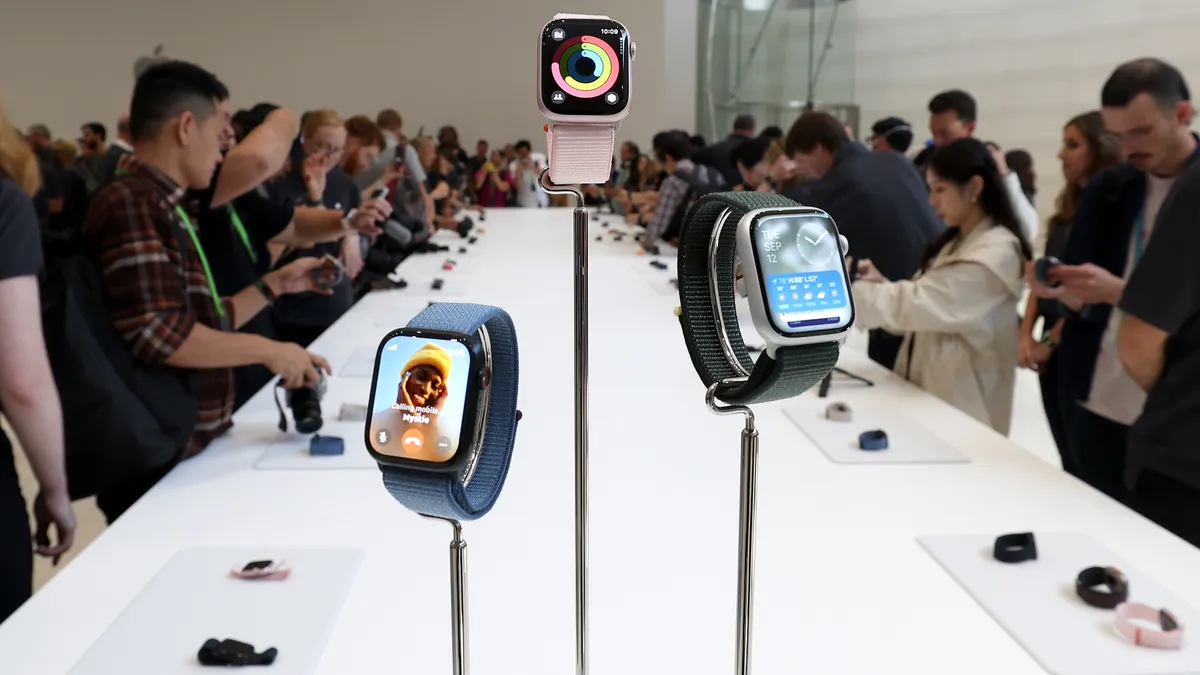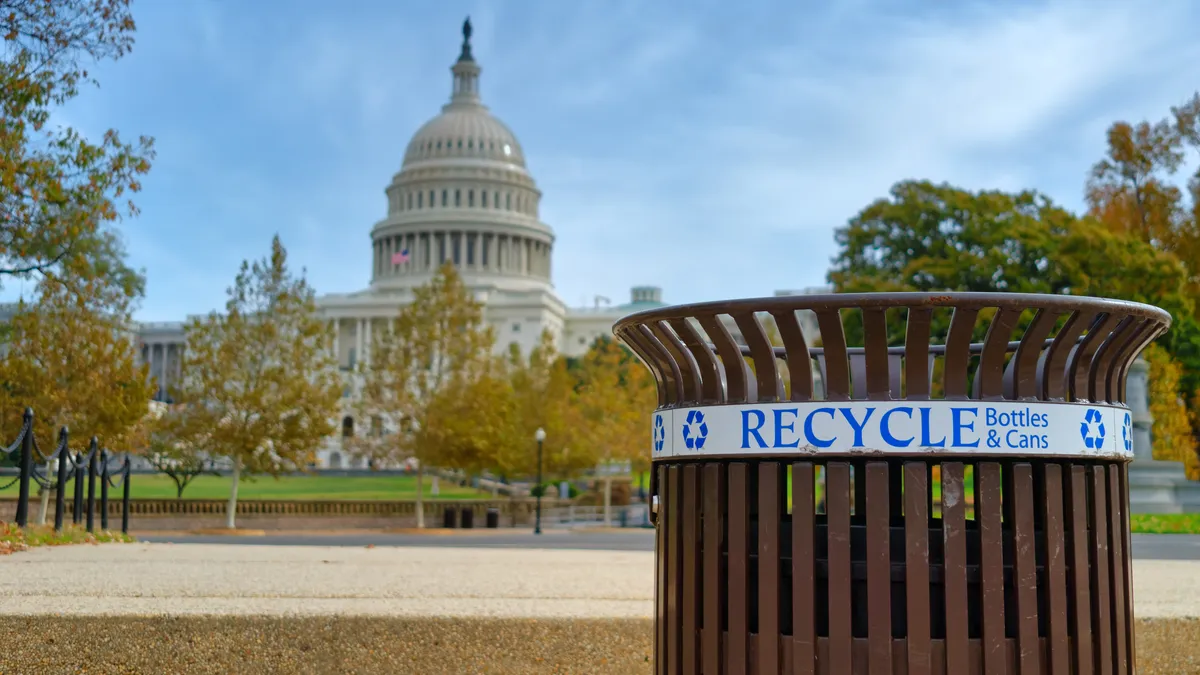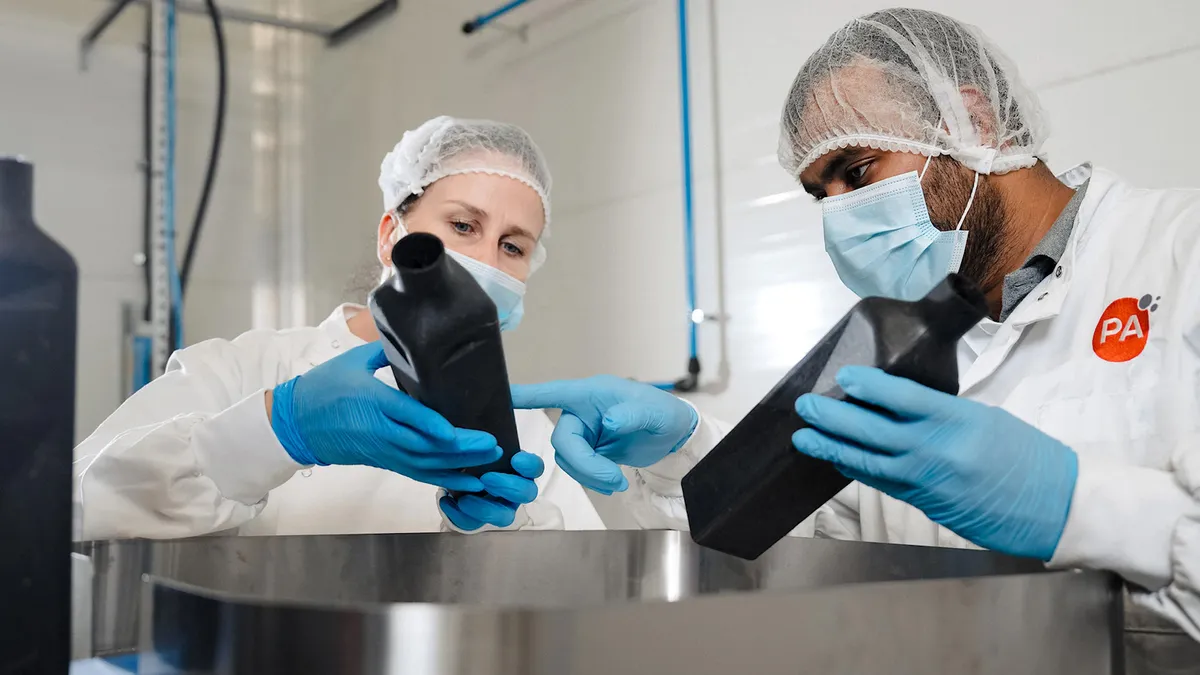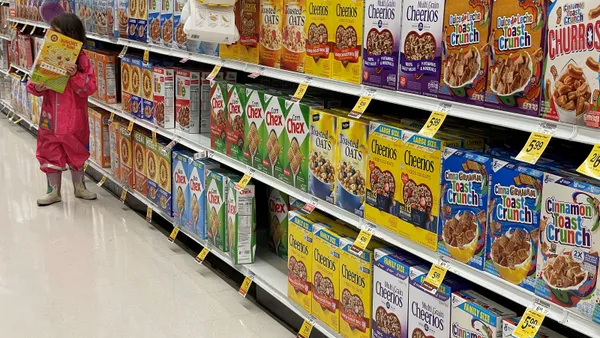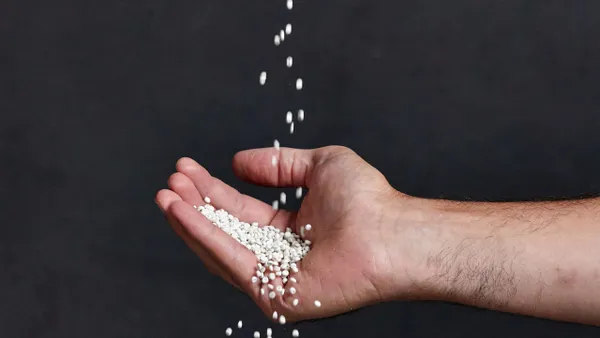Apple is on track to phase out plastic in primary and secondary packaging by 2025 and is rolling out fiber-based packaging designs for multiple new products, executives announced at one of the company’s product unveiling events Tuesday.
The company announced its “first entirely fiber-based packaging” will be used in the upcoming Apple Watch Series 9 lineup, which the company said will be one of its “first-ever carbon neutral products.”
“To cut emissions from transportation we started by redesigning Series 9 packaging to be 100% fiber-based and more compact. It has a new smaller shape that lets us ship up to 25% more watches per trip,” said Lisa Jackson, vice president of environment, policy and social initiatives, in a video.
Apple said this plastic content calculation excludes “adhesives, inks and coatings.”
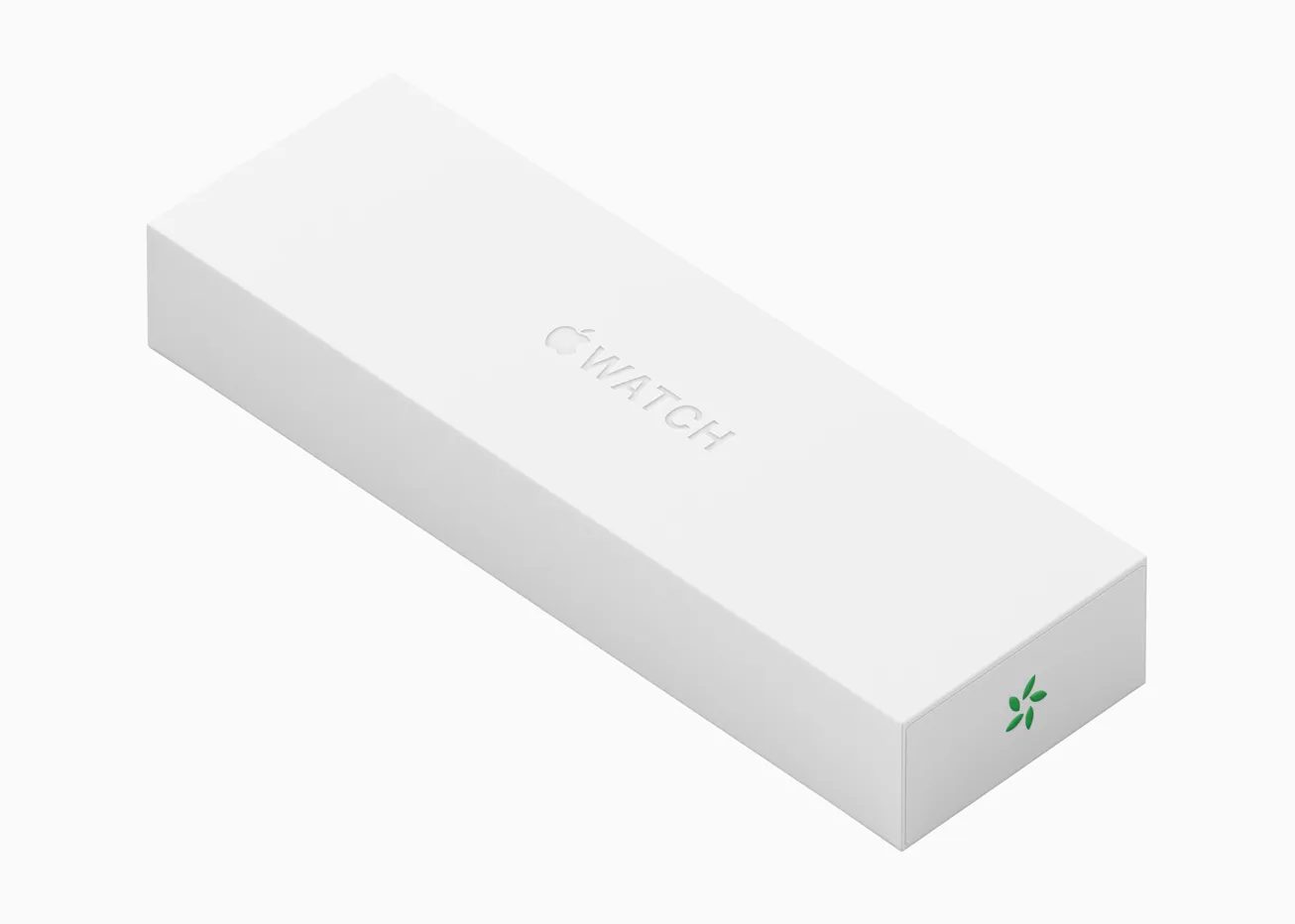
Additionally, Apple said the packaging for its iPhone 15 products will be more than 99% fiber-based.
The company’s most recent sustainability report, using 2021 data, noted a 75% reduction in plastic packaging since 2015. According to data shared with the Ellen MacArthur Foundation the company’s baseline was 37,000 metric tons of plastic packaging. Data submitted to EMF indicates that polypropylene, PET, expanded polystyrene and polystyrene were the most common types of plastic previously used in the company’s packaging.
Apple’s sustainability report said focus areas included “replacing large plastic trays, wraps, and foam cushioning with fiber alternatives that have higher recovery rates and reduced environmental footprints.” The EMF filing also noted efforts to phase out plastic in pouches, cable wraps and protective films.
The report said the iPhone 13 product line was the first “to be shipped without any plastic packaging components.” A footnote specified this refers to “any packaging part made of majority plastic, including plastic wraps, plastic trays, or plastic screen films” and said “some plastic is still found on packaging components made primarily of fiber.”
In 2021, Apple reported using 257,000 metric tons of packaging overall (with volumes increasing sequentially since at least 2017). At the time, only 4% of that was plastic. Recycled fiber accounted for 63%, with the remaining 33% coming from “responsibly sourced” virgin fiber.
This move is part of a broader trend being pursued by tech companies. Google has also reported progress on a similar target to “eliminate plastic from packaging and make packaging 100% recyclable by 2025.”



